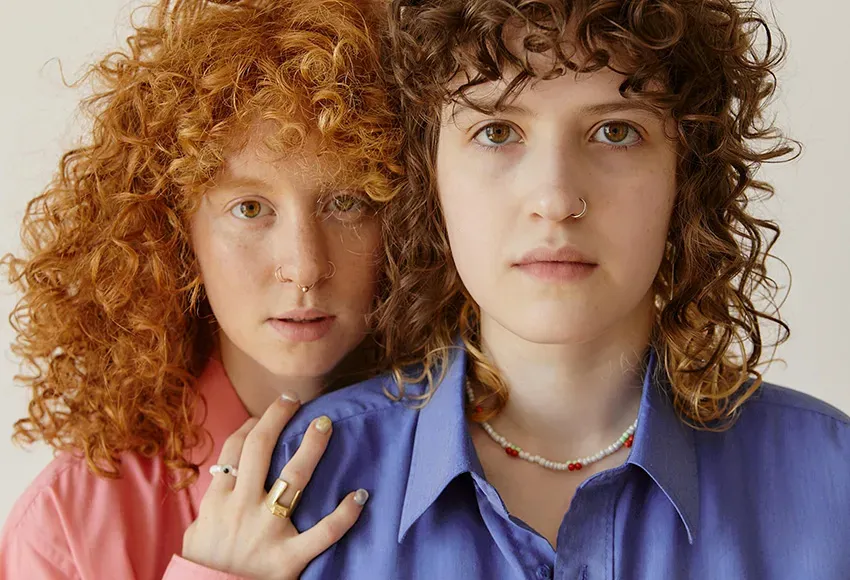March is Bisexual Health Month, and according to a new poll from Gallup, more people in the United States identify as Bisexual than ever before.
In 2024, 7.6% of all Americans identified as a member of the LGBTQ+ community – doubling the numbers of just 12 years ago. Among those is an increasing number of Bisexuals: 57% of people Gallup identified as LGBTQ+ said they were Bisexual.
Mental health
While LGBTQ+ people of all identities are more likely to report mental health challenges than heterosexual people, Bisexuals are more likely than any other sexual orientation to experience anxiety, depression, and suicidal ideation. A study from the Bisexual Resource Center found that 40% of people who identified as Bi had attempted suicide at some point in their lives; Bisexual women were six times more likely to have attempted in the past 12 months than heterosexual women.
Bisexual youth are especially prone to mental health-related issues. In a study by the Human Rights Campaign, only 44% of Bisexual youth reported having a trusted adult they could confide in. In comparison, 54% of Lesbian and Gay youth felt they had an adult ally in their lives.
Substance abuse
Bisexual people of all ages are also more likely than homosexual or heterosexual people to experience substance abuse issues. According to the Substance Abuse and Mental Health Services Association, Bisexual women are among some of the highest users of drugs and alcohol in the LGBTQ+ community. According to the Bisexual Resource Center, 40% of Bisexual women reported using marijuana, 12.5% reported an alcohol use disorder, and 12.5% reported an opioid use disorder – all higher than the numbers for Lesbians and straight women. According to the BRC, one in three Bisexuals reported substance abuse issues.
"We know that statistically, Lesbian, Gay, and Bisexual Americans face increased risks for mental health and substance use issues, which is often related to stress caused by stigma, discrimination, and harassment," said Miriam E. Delphin-Rittmon, the leader of the Substance Abuse and Mental Health Services Administration.

Marginalized identities
Several studies show that people with multiple marginalized identities are more likely to struggle with mental health issues. Bisexual people who also identify as Transgender, Nonbinary, and/or BIPOC are at even higher risk of mental health and substance abuse issues. Transgender and BIPOC people make up a large section of the Bisexual community. Forty percent of BIPOC LGBTQ+ people identify as Bisexual, and half of all Transgender people identify as also Bisexual. According to the HRC, LGBTQ+ BIPOC students are 27% more likely than their peers to attempt suicide. The study also found that 28% of LGBTQ+ BIPOC adults are uninsured.
Sexual assault and health
Bisexual people make up the largest demographic of sexual assault reporters. Bisexual men are more likely to have experienced sexual abuse as minors than heterosexual men and have a 143% higher chance of experiencing intimate partner violence in adulthood. According to the CDC, 66% of Bisexual women have reported rape, intimate partner violence, or stalking.
Bisexual men and women are at an increased risk for sexually transmitted infections as well, because they are less likely than Gay and Lesbian people to disclose their sexual orientation to their doctors. Thirty-nine percent of Bisexual men and 33% of Bisexual women admitted to the HRC that they have not disclosed their sexual orientation to their healthcare provider.
Bisexual women are more likely than heterosexual women to get tested for HIV, but studies show they are also more likely to participate in activities that increase risk for HIV, such as anal sex and condomless sex. On the contrary, Bisexual men are less likely to get tested for HIV, which has resulted in Bi men being disproportionately affected by the virus. Bi men and women also have a higher risk of HPV, which can lead to cervical and anal cancer.
Compared to the general population, Bisexual women are more likely to develop breast cancer, heart disease, and obesity. These numbers are associated with the fact that Bisexual women are less likely than Lesbians and heterosexuals to access preventive care, such as mammograms and pap tests, and more likely to encounter mental health issues that can coincide with obesity.
Bi erasure
While Bi people continue to face elevated risks for mental, physical, and sexual health ailments in disproportionately higher numbers, experts believe the culprit lies in Bi erasure. Often, Bisexual people feel invisible in their community due to antiquated, biphobic ways of thinking. Bisexual people in straight-passing relationships may not always feel welcome or accepted in Queer spaces due to the stigma that they're "not Queer enough." Other times, Bisexual people feel their identities erased when they receive comments about their sexuality being "just a phase" or a "stepping stone to homosexuality."
The best thing allies of the Bi community can do to close the gap in health disparities is to accept the identities of their friends and family, validate their experiences, and be supportive of their life choices. Bisexual people in same-sex relationships are still Bisexual. Bisexual people in different-sex relationships are still Bisexual. Bisexual people who have never had a relationship are still Bisexual. There is no right way to be Bi. Taking care of ourselves and our community is the first step in closing the gap.


